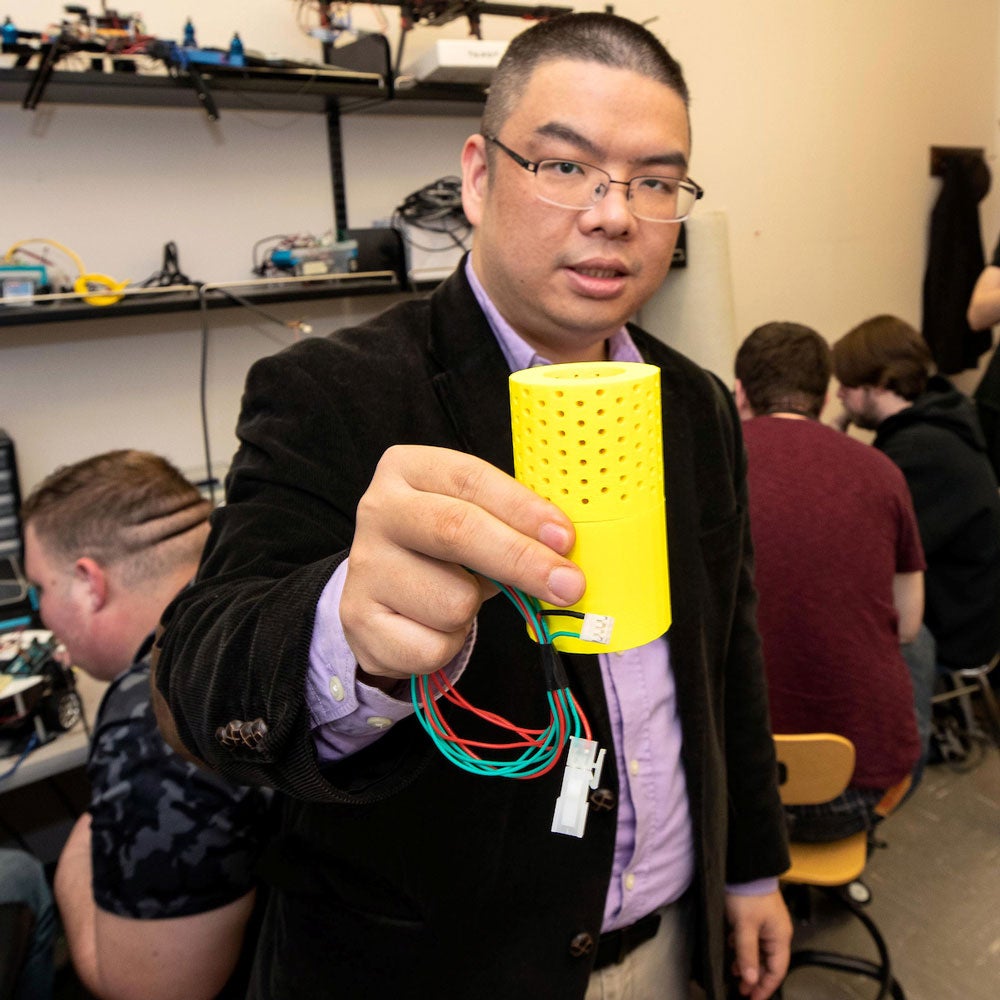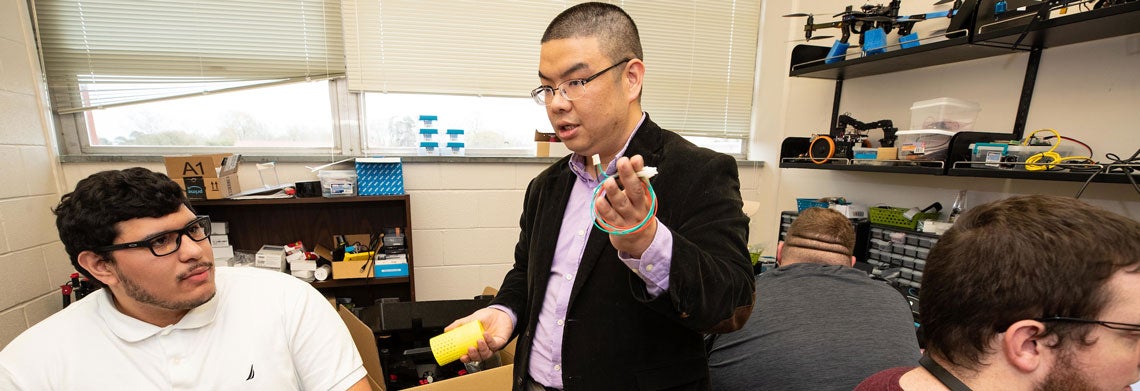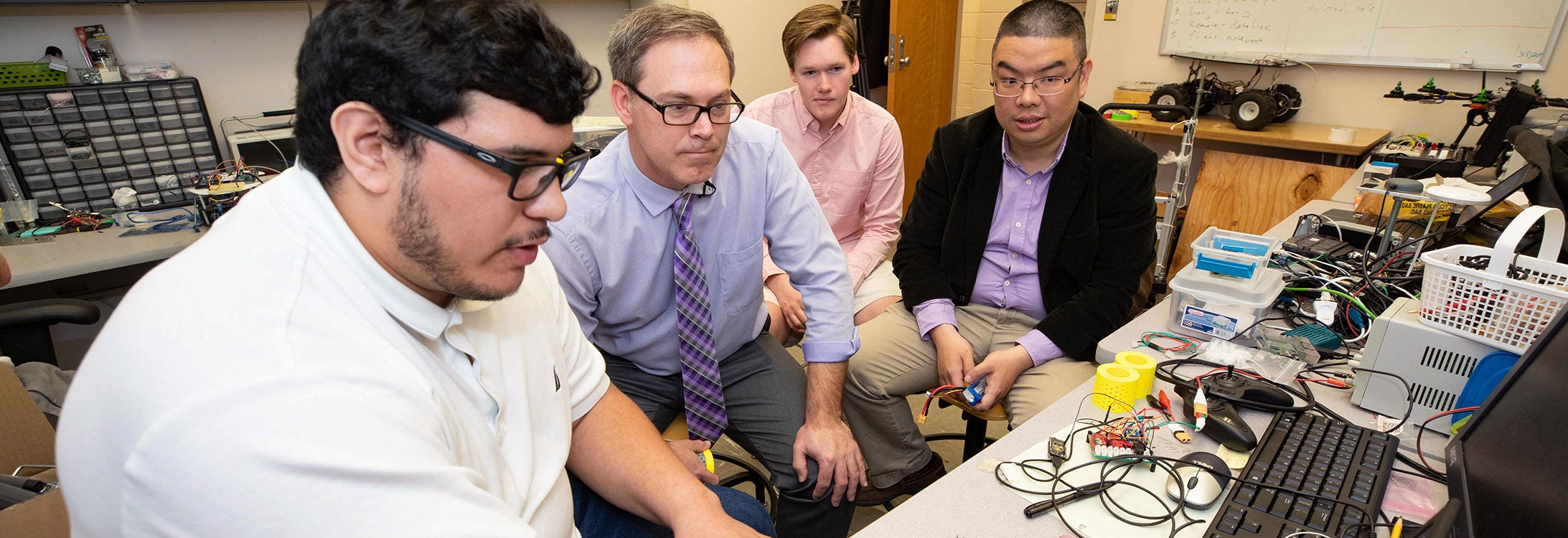ARCTIC ADVENTURE
Professor deploying snow sensors developed at ECU
Snow sensors developed by students and faculty at East Carolina University to aid in climate change research will soon make their way to the Arctic with Dr. Dan Dickerson.
Dickerson, an ECU science education professor and STEM CoRE coordinator, will work with seven other researchers in Utiagvik (formerly Barrow), the northernmost city in Alaska, March 30 through April 6.
Dickerson, along with ECU Department of Engineering faculty member Dr. Zhen Zhu and his students, developed the sensors researchers will deploy to help measure snow melt in the Arctic.

Dr. Zhen Zhu holds one of the Smart Stick sensors
“We will travel 20 miles outside Utiagvik to deploy the sensor prototypes. Basically they will help measure how much melting is occurring in the Arctic over a period of time,” Dickerson said.
He is traveling with researchers from Old Dominion University and the University of Washington who are studying climate change. Dickerson was approached by his colleagues at ODU to help build sensors that could measure the snow melt but were small and economic.
Dickerson said it may seem that a simple measuring device like a ruler could be used for measuring snow, but this device measures how much is melting on top and under the snow, and can be left for extended periods of time.
While Dickerson provided the parameters needed for the sensors for scientific purposes, ECU engineering students made his vision into an actual product.
The students developed the design and coding for the sensors, which measure water as the snow melts. The students faced several challenges including making sure the sensor would work in the extreme temperatures of the Arctic, creating a device that is small and economical, and determining how to get the sensor to work with WiFi. It took the students approximately three months to develop the sensor.
Senior biomedical engineering student Robert Ocampo was one of the students who helped create on the prototype. He said it feels amazing to have something he’s helped develop go to the Arctic as part of a research project.
“I feel like everything I’ve learned throughout my schooling has all culminated to this. It feels great,” said Ocampo.
Ocampo along with electrical engineering students in ECU’s chapter of the Institute of Electrical and Electronics Engineers worked together to develop the snow sensors.
Zhu said the job of the engineers was to develop a low-power data collection system based on hardware the students could build and program. The sensors had to be able to send the data to storage for collection later by scientists and send the information remotely.
“It gives them hands-on experiences. More importantly this is a real scientific project; this is not a class project, not a lab assignment. This is a real thing — they are contributing to real science so it gives them a sense of ownership of their work,” said Zhu.
Dickerson said if these sensors perform well, it could provide a low-cost solution for researchers.
Follow ECU’s social media accounts to journey with Dickerson during his Arctic adventure.

Follow ECU professor Dan Dickerson during his Arctic adventure on ECU’s social media accounts or search #ECUArctic or #Arrrghtic.
Center for STEM Education (CSTEM)
Facebook: @ecucstem
Twitter: @ecucstem
Instagram: ecucstem
Main ECU
Twitter: @EastCarolina
Instagram: eastcarolinauniv
Facebook: @EastCarolina
